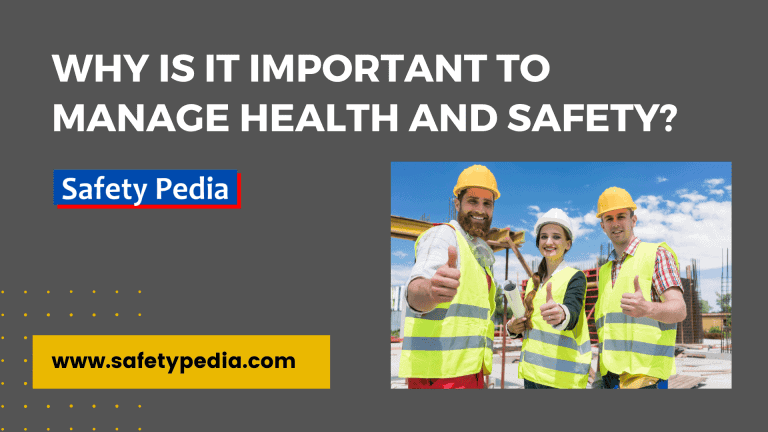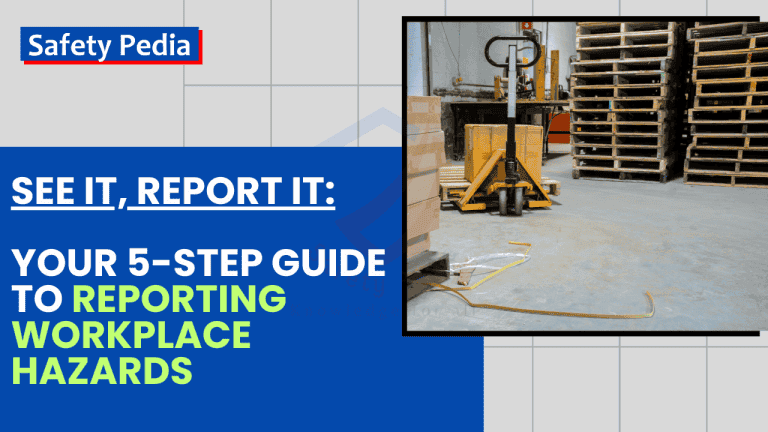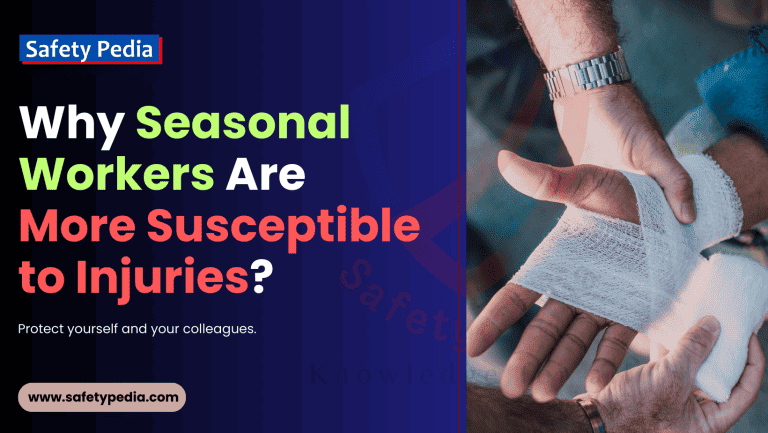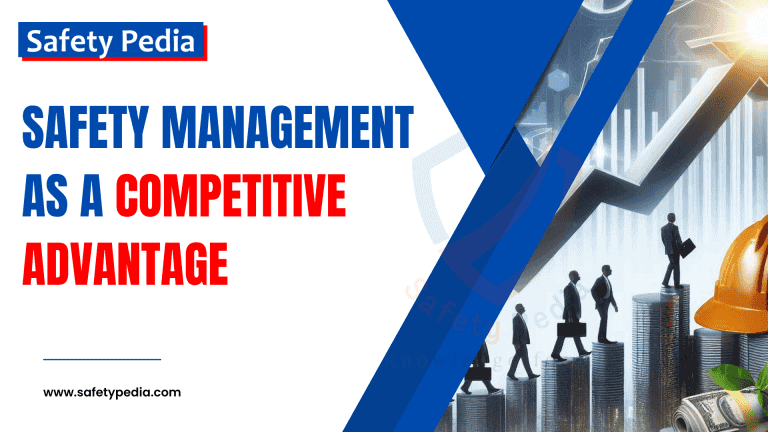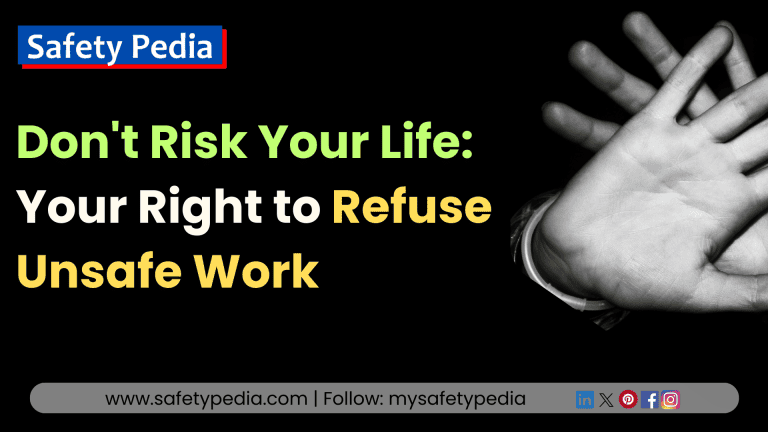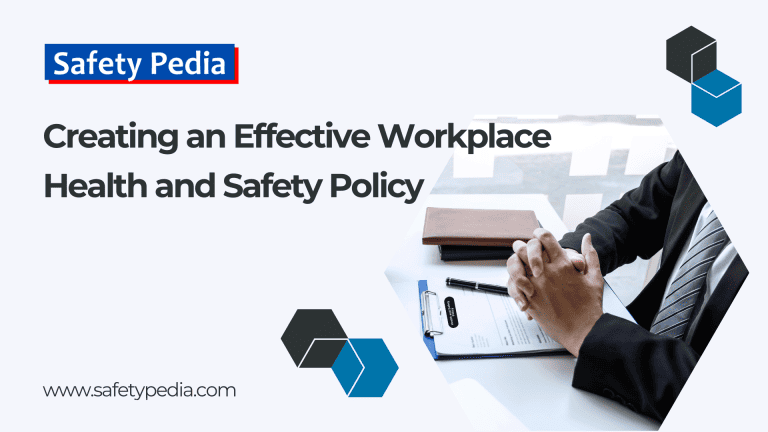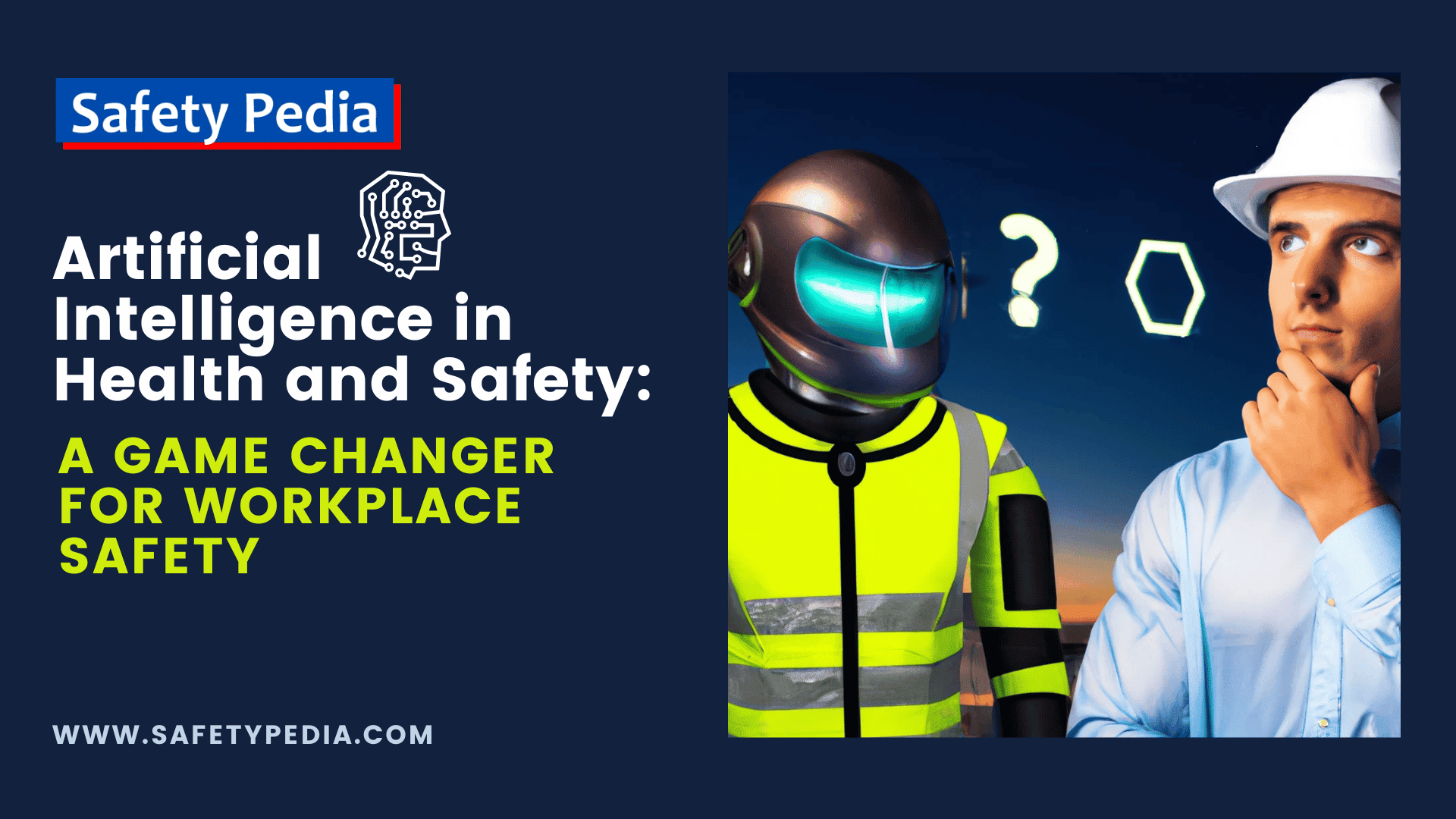
AI in Health and Safety: A Game Changer for Workplace Safety
Artificial intelligence in health and safety can revolutionize occupational health and safety by improving the identification of hazards, predicting potential risks, providing real-time monitoring, recognizing unsafe behaviors, detecting unsafe conditions, and suggesting ways to mitigate potential risks.
AI algorithms can predict accidents based on non-compliance, alerting management of potential hazards before they turn into accidents. This can help prevent accidents from occurring, minimizing the risk to workers.
In the event of an accident, AI can assist in the investigation process by analyzing data and providing real-time insights to identify the causes of the accident. AI can automatically add the lessons learned in the training and update the training contents to prevent similar accidents from happening again.
“AI in health and safety, Where innovation meets prevention, accidents become history, and knowledge shapes a safer future.”
What role can artificial intelligence play in occupational health and safety?
Artificial intelligence can play a significant role in occupational health and safety in the following ways:
- Identifying hazards: AI can be used to analyze large amounts of data from a variety of sources, including incident reports, safety observations, and sensor data, to identify potential hazards. This can help organizations to identify and address hazards before they cause accidents or injuries.
- Predicting risks: AI can be used to predict the likelihood of accidents and injuries occurring based on historical data and other factors. This can help organizations to develop and implement preventive measures.
- Risk assessment: AI algorithms can help identify potential health and safety risks in the workplace and provide real-time risk analysis.
- Predictive maintenance: AI-powered sensors can detect potential equipment failures before they occur, allowing for proactive maintenance and reducing the risk of accidents.
- Detecting Behaviours: AI can also improve occupational health and safety by predicting workers’ unsafe behaviors based on their safety performance. By analyzing data from previous accidents, near-misses, and non-compliances, AI algorithms can identify patterns of unsafe behavior in workers. AI cameras can detect changes in body position, gestures, working style, normal and abnormal movements, and habits to monitor worker behavior, including observing safety protocols.
- Real-time monitoring and alerting: AI systems can monitor worker activity if an employee is at risk, engaging in unsafe acts, taking shortcuts, making non-compliance, not wearing PPE etc. AI can generate real-time alerts for supervisors and workers to stay within the safety protocols. AI-powered CCTV or video surveillance systems can be used to monitor workers and workplaces for unsafe conditions and behaviors. This can help organizations to identify and address potential problems before they lead to accidents or injuries.
- Providing real-time feedback and suggestions: AI can be used to provide workers with real-time feedback on their safety performance. This can help workers to identify and correct unsafe behaviors. AI can also be used to suggest ways to improve workplace safety procedures and protocols.
- Data analytics: AI can process large amounts of data to identify patterns that can be used to improve safety in the workplace.
- Hazardous industries: AI can be used to monitor and control processes in hazardous industries remotely, reducing the risk of accidents.
- Ergonomics: AI integration into ergonomics risk assessment can help identify potential ergonomic risks and suggest improvements to worker posture and positioning.
- Training and education: AI can develop and deliver customized training and education programs based on various health and safety topics and emergency scenarios. AI can then suggest future controls, such as providing specific training to improve safety performance or modifying the work environment to reduce risk factors. The system can provide a list of personalized recommendations based on the worker’s past performance, ensuring that the worker receives the most effective training.
- Robotics: AI-powered robots can be used to perform dangerous or repetitive tasks, reducing the risk of injury to human workers.
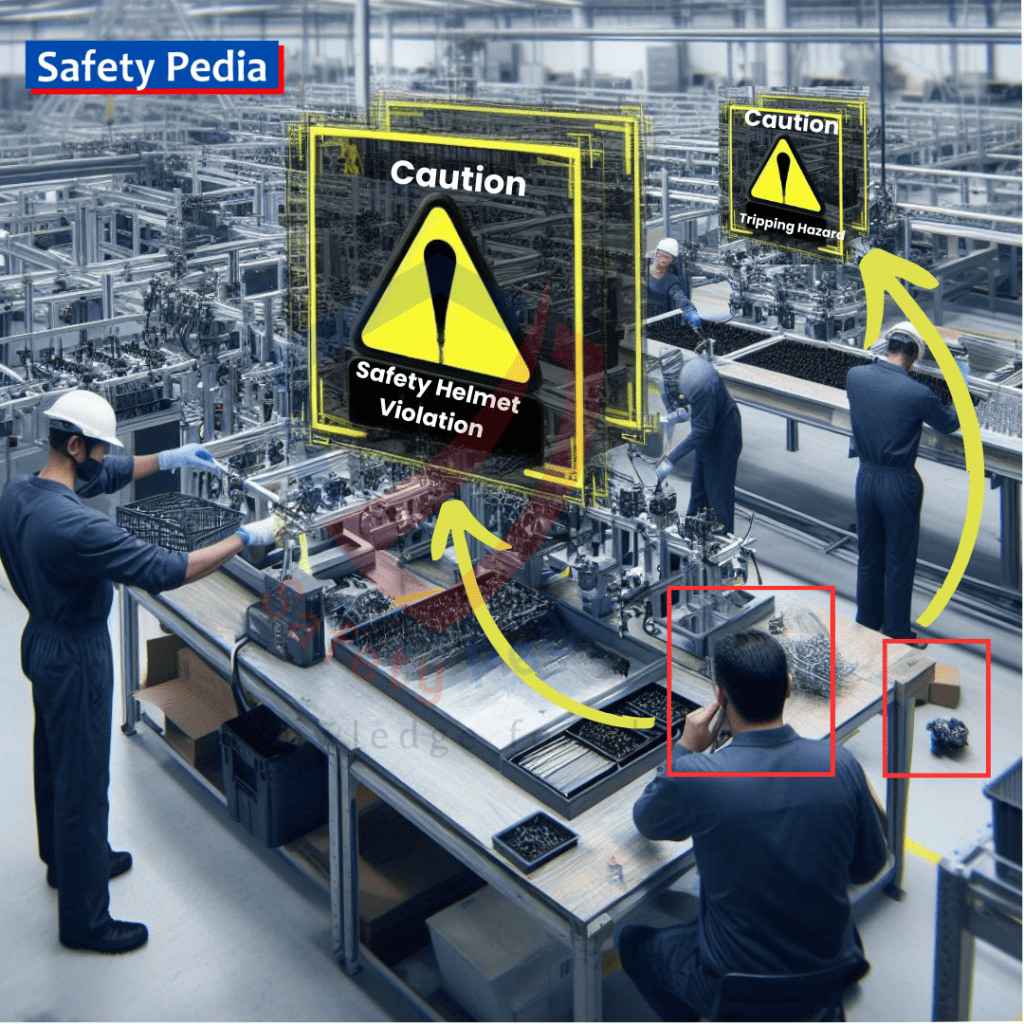
Here are some specific examples of AI-powered health and safety solutions:
- AI-powered safety inspection software: This software can be used to automate the safety inspection process, making it more efficient and effective.
- AI-powered wearable devices: Workers can wear these devices to monitor their exposure to hazards such as noise, dust, and fumes. They can also be used to track workers’ movements and identify unsafe behaviors.
- AI-powered training simulators: These simulators can be used to train workers on safety procedures in a safe and controlled environment.
AI is a powerful tool that can be used to significantly improve health and safety in the workplace. As AI technology continues to develop, we can expect to see even more innovative and effective AI-powered health and safety solutions in the future.

Artificial Intelligence: The state of the art science in Safety
The state of the art science in safety is a rapidly evolving field, but some of the most promising areas of research include:
- Artificial intelligence (AI): AI is being used to develop new tools and systems to help identify, assess, and manage risks. For example, AI-powered systems can be used to analyze large datasets of safety data to identify patterns and trends that may not be visible to the human eye. AI can also be used to develop virtual reality (VR) and augmented reality (AR) training simulations that can help workers learn and practice safety procedures in a safe and controlled environment.
- Human factors engineering: Human factors engineering is a discipline that focuses on designing systems and products to be as safe and user-friendly as possible. When designing systems, human factors engineers consider users’ physical, cognitive, and emotional capabilities, and they work to identify and eliminate potential hazards.
- Safety culture: Safety culture is the set of values, beliefs, and attitudes an organization has about safety. A strong safety culture is essential for achieving safety excellence. Safety scientists are working to develop new ways to measure and improve safety culture in organizations.
In addition to these specific research areas, safety scientists are also working to develop new and more effective ways to prevent accidents and injuries in various settings, including the workplace, transportation, and the home.
Here are some examples of state-of-the-art safety technologies and practices:
- Exoskeletons: Exoskeletons can be used to help workers perform physically demanding tasks more safely and efficiently.
- Self-driving cars: Self-driving cars have the potential to significantly reduce the number of traffic accidents caused by human error.
- Wearable devices: Wearable devices can be used to monitor workers’ exposure to hazards and provide real-time alerts.
- Virtual reality (VR) and augmented reality (AR) training: VR and AR training simulations can help workers learn and practice safety procedures in a safe and controlled environment.
- Data analytics: Data analytics can be used to identify and assess risks and to develop targeted interventions to prevent accidents and injuries.
By investing in research and development, we can continue improving the state-of-the-art science in safety and make our world safer for everyone.
AI and Stop Work Authority
Yes, AI can be used to implement stop work authority. In fact, AI is already being used in some industries to monitor machine parameters and stop operations if a safety hazard is detected.
For example, in the manufacturing industry, AI-powered systems are being used to monitor the performance of robots and other machines. If the system detects that a machine is not operating within safe parameters, the system can automatically stop the machine to prevent accidents.
AI can also be used to implement stop work authority in other industries, such as construction, healthcare, and transportation. For example, in the construction industry, AI-powered systems can be used to monitor the stability of structures and warn workers of potential hazards. In the healthcare industry, AI-powered systems can be used to monitor patient vital signs and alert medical staff to any abnormalities. In the transportation industry, AI-powered systems can be used to monitor vehicle performance and traffic conditions and warn drivers of potential hazards.
There are a number of benefits to using AI to implement stop work authority. AI systems can monitor machine parameters and work environments continuously, which helps to reduce the risk of human error. Additionally, AI systems can be trained to detect safety hazards that humans may not be able to see, such as microscopic cracks in a structure or subtle changes in a patient’s vital signs.
There are also some challenges to using AI to implement stop work authority. One challenge is that AI systems can be complex and difficult to understand. This can make it difficult to ensure that the system is working correctly and that it will not make false positives or negatives. Additionally, AI systems can be expensive to develop and deploy.
Overall, the use of AI to implement stop work authority has the potential to significantly improve safety in a variety of industries. However, it is important to carefully consider the benefits and challenges before deploying an AI-powered stop work authority system.
Here are some additional factors to consider when using AI to implement stop work authority:
- The system should be designed to be transparent and accountable. Workers should be able to understand how the system works and why it made a decision to stop work. Additionally, there should be a process in place for workers to challenge the system’s decision if they believe it is incorrect.
- The system should be designed to be robust to errors. The system should be able to handle unexpected events and should not be easily fooled by malicious actors.
- The system should be designed to be adaptable. The system should be able to learn from new information and adjust its behavior accordingly.
By following these guidelines, we can help to ensure that AI-powered stop work authority systems are safe and effective.
AI-Related Ethical Issues in Health and Safety
Artificial intelligence (AI) has the potential to revolutionize health and safety, but it also raises a number of ethical issues. Some of the key ethical issues to consider include:
- Privacy and data security: AI systems are trained on large amounts of data, including personal data. It is important to ensure that this data is collected, used, and stored in a secure and ethical manner.
- Bias and discrimination: AI systems can be biased, reflecting the biases that exist in the data they are trained on. This could lead to AI systems making decisions that are unfair or discriminatory.
- Transparency and accountability: Understanding how AI systems make decisions can be difficult. This lack of transparency can make it difficult to hold AI systems accountable for their decisions.
- Job displacement: AI is expected to automate many tasks, including some tasks that are currently performed by safety professionals. This raises concerns about job displacement and the need for new skills.
It is important to address these ethical issues before AI is widely deployed in health and safety. Here are some things that can be done to mitigate the ethical risks of AI:
- Develop ethical guidelines for the development and use of AI in health and safety. These guidelines should address issues such as privacy, data security, bias, discrimination, transparency, accountability, and job displacement.
- Involve stakeholders in the development and deployment of AI systems. This includes stakeholders such as safety professionals, workers, and patients.
- Subject AI systems to rigorous testing and evaluation before they are deployed. This will help to identify and mitigate any potential biases or other problems.
- Provide training to safety professionals and workers on how to use AI systems safely and ethically.
- Monitor the use of AI systems in health and safety and make adjustments as needed.

AI-Related Emotional Issues in Health and Safety
By taking these steps, we can help to ensure that AI is used to improve health and safety in a way that is ethical and responsible.
AI in health and safety can also have a number of emotional impacts on workers. Some of the potential emotional impacts include:
- Anxiety and stress: Workers may be anxious or stressed about the potential for AI to automate their jobs, or about the potential for AI systems to make mistakes that could lead to accidents or injuries.
- Loss of control: Workers may feel like they are losing control over their work environment if they are being monitored or supervised by AI systems.
- Isolation and disconnection: Workers may feel isolated and disconnected from their colleagues and supervisors if they are interacting with AI systems more than with humans.
- Loss of meaning and purpose: Workers may feel like their work is less meaningful and purposeful if it is being automated by AI systems.
It is important to be aware of these potential emotional impacts and to take steps to mitigate them. Here are some things that organizations can do:
- Communicate openly and honestly with workers about the use of AI. Explain how AI will be used and what impact it is expected to have on workers’ jobs.
- Provide training and support to workers on how to use AI systems safely and effectively. This will help workers to feel more in control and less anxious about the use of AI.
- Create opportunities for workers to interact with each other and with supervisors. This will help workers to feel less isolated and disconnected.
- Recognize and reward workers for their contributions to the organization. This will help workers to feel like their work is meaningful and purposeful, even if some of their tasks are being automated by AI.
By taking these steps, organizations can help to ensure that the emotional impacts of AI in health and safety are positive.
In addition to the above, it is also important to consider the emotional impacts of AI on safety professionals. Safety professionals may feel anxious or stressed about the potential for AI to replace them, or about the need to learn new skills in order to work effectively with AI systems. It is important for safety professionals to stay informed about the latest developments in AI and to develop a plan for how they can use AI to enhance their skills and knowledge.
Overall, AI has the potential to have a significant impact on health and safety, both positive and negative. It is important to be aware of the potential emotional impacts of AI on workers and safety professionals, and to take steps to mitigate them.
“In the era of AI’s rise in health and safety, let ethics be our compass and empathy our guiding star, ensuring that the human touch remains at the heart of every safety measure.”
Abdullah Malik
AI in Health and Safety: What Safety Professionals Should Do Now?
Safety professionals should start preparing for the future of AI in health and safety now. Here are some things you can do:
- Educate yourself about AI. Learn about the different types of AI and how they can be used to improve health and safety.
- Identify opportunities to use AI in your organization. Think about how AI could improve your safety program by identifying hazards, predicting risks, monitoring workers and workplaces, or providing real-time feedback and suggestions.
- Develop a plan for implementing AI. Once you have identified opportunities to use AI, develop a plan for implementing it in your organization. This plan should include identifying the specific AI solutions you will use, developing a training program for your staff, and communicating the changes to your employees.
- Work with your IT team. AI is a complex technology, so it is important to work with your IT team to implement AI solutions in a secure and effective manner.
- Monitor the development of AI in health and safety. AI is a rapidly evolving field, so it is important to stay up-to-date on the latest developments. This will help you to identify new opportunities to use AI to improve health and safety in your organization.
Here are some additional tips for safety professionals:
- Be proactive. Don’t wait for AI to come to you. Start exploring the possibilities now and develop a plan for using AI to improve your organization’s health and safety.
- Be open-minded. AI is a new technology, so being open to new ideas and approaches is important.
- Be collaborative. Work with your IT team, other safety professionals, and your employees to implement AI in a way that is effective and beneficial for everyone.
- AI has the potential to revolutionize health and safety. By taking the time to learn about AI and identify opportunities to use it in your organization; you can position yourself as a leader in this emerging field.

Can Artificial Intelligence help improve the safety culture of an organization?
Yes, AI can help improve an organization’s safety culture by identifying potential safety issues and providing real-time feedback and suggestions. AI can analyze data and provide insights that can be used to improve safety protocols, identify areas that need improvement, and suggest ways to enhance safety culture.
By providing real-time feedback, AI can encourage workers to be more proactive in maintaining their safety and encourage them to take ownership of their safety. This can help to promote a safety-focused mindset within the workplace and promote a culture of safety.
Furthermore, AI can assist in creating a culture of accountability by providing real-time feedback to workers when they fail to follow safety protocols. This feedback can help to promote a sense of responsibility and encourage workers to take the necessary steps to improve their safety performance.
In conclusion, AI can help improve an organization’s safety culture by identifying potential safety issues, providing real-time feedback and suggestions, developing customized training and educational programs, and promoting a culture of accountability.
Can AI make lone working safe?
Lone working is a common practice in many industries, such as construction, agriculture, security, healthcare, and journalism. Lone workers face various risks, such as accidents, violence, isolation, and stress.
How can AI help to protect and support lone workers? Here are some possible ways:
- AI can monitor the location and status of lone workers using GPS, sensors, and cameras. If a worker falls, gets injured, or faces a threat, AI can alert the emergency services or the employer. AI can also provide real-time guidance and assistance to the worker through voice or text messages.
- AI can analyze the data collected from lone workers and identify patterns, trends, and risks. AI can help to improve the safety policies and procedures for lone working, such as setting limits on working hours, providing training and equipment, and conducting regular check-ins.
- AI can enhance the communication and collaboration between lone workers and their colleagues, managers, and clients. AI can facilitate video calls, group chats, and file sharing. AI can also create a sense of community and belonging among lone workers by providing feedback, recognition, and support.
AI has the potential to make lone working safer, more efficient, and more satisfying. However, there are also some challenges and limitations to consider:
- AI may not be able to handle complex or unpredictable situations that require human judgment and intervention. AI may also malfunction or be hacked, putting the worker in danger.
- AI may raise ethical and legal issues regarding the privacy and consent of lone workers. AI may collect sensitive personal information from lone workers without their knowledge or permission. AI may also use the data for purposes that are not related to their safety or well-being.
- AI may affect the psychological and social aspects of lone working. AI may reduce the human interaction and autonomy of lone workers. AI may also create unrealistic expectations or pressure on lone workers to perform better or faster.
AI is not a magic solution that can solve all the problems of lone working. It is a tool that can complement and augment human capabilities and resources. Lone workers and their employers need to be aware of the benefits and risks of using AI, and adopt it in a responsible and ethical manner.
Rise in Demand for Communication with Technology: The Future of Safety
In the evolving landscape of safety, there is a notable and growing demand for effective communication with technology, including robots and artificial intelligence (AI) systems. This demand is driven by several factors that are shaping the future of safety practices:
- Human-Machine Collaboration:
The integration of robots and AI into safety-critical domains requires seamless collaboration between humans and machines. Effective communication between these entities is essential for ensuring safety. Safety professionals must be able to interact with and control robots to perform tasks that are hazardous to humans. - Remote Operations and Monitoring:
Robots and AI-driven systems are increasingly being used for remote operations and monitoring in hazardous environments. This includes scenarios such as disaster response, where robots equipped with sensors and cameras can assess the safety of disaster-stricken areas without exposing humans to risks. Clear communication between human operators and these machines is crucial for effective co-ordination. - Real-Time Alerts and Feedback:
AI systems can provide real-time alerts and feedback in safety-critical situations. For example, in manufacturing, AI-powered sensors can detect equipment malfunctions and immediately alert operators to take corrective actions. Effective communication channels ensure that these alerts are received and acted upon promptly. - Training and Education:
Safety professionals and workers need to be trained in the safe use of robotic systems and AI technologies. Communication tools and methods are vital for conveying safety protocols, procedures, and best practices to ensure that individuals can operate these technologies safely. - Safety in Autonomous Systems:
As autonomous vehicles and drones become more prevalent in transportation and other industries, there is a need for robust communication between these systems and external entities. Ensuring that autonomous systems can communicate their intentions and respond to human commands is vital for safety. - Emergency Response and Search and Rescue:
Robots equipped with advanced sensors and communication capabilities are increasingly used in emergency response and search and rescue operations. These robots can locate and communicate with survivors in disaster-stricken areas, improving the efficiency of rescue efforts. - Ethical Considerations and Human Oversight:
Effective communication with AI and robots is essential for maintaining human oversight and ethical decision-making. In situations where AI is making critical decisions, humans must have the means to understand, control, and intervene when necessary to ensure ethical and safe outcomes. - Language Processing and Natural Interaction:
Advancements in natural language processing and human-robot interaction enable more intuitive and effective communication with robots. Safety professionals may use voice commands or conversational interfaces to interact with AI systems, making safety processes more user-friendly and accessible.
In the future of safety, the ability to communicate effectively with technology, particularly robots and AI systems, will be a core competency for safety professionals. This demand arises from the increasing integration of technology into safety-critical domains and the need to ensure that these technologies are used safely and ethically. As such, professionals in the field of safety must be equipped with technical knowledge and the ability to interface with and control advanced technological systems to enhance safety outcomes.

Can Artificial Intelligence be a threat to safety professionals?
No, AI is not a threat to safety professionals. While AI can automate many occupational health and safety tasks, it cannot replace safety professionals’ knowledge, experience, and expertise.
AI can support safety professionals by providing real-time insights and data, identifying potential risks, and providing customized recommendations. However, safety professionals are still needed to interpret this data, make decisions based on it, and develop strategies to address potential risks.
Moreover, safety professionals are responsible for ensuring that all employees follow safety protocols, that the work environment is safe, and that training programs are current. While AI can assist in this process, it cannot replace the human element of monitoring and oversight necessary to maintain a safe workplace.
AI can enhance the role of safety professionals by providing them with better insights and data, freeing up their time to focus on more complex and strategic tasks. AI can support the work of safety professionals, enhance their role, and ultimately improve workplace safety.
Can Artificial Intelligence identify workers’ non-compliance in the workplace?
Yes, AI can identify workers’ non-compliances in the workplace. AI algorithms can analyze data from various sources, such as sensors, cameras, and even voice and facial recognition, to identify workers who do not follow safety protocols or are making non-compliances.
For example, AI algorithms can be trained to identify workers not wearing the correct personal protective equipment (PPE) or not following established safety procedures. By identifying these non-compliances, AI can alert supervisors or safety professionals, who can take corrective action and provide additional training to prevent future incidents.
The ability of AI to identify non-compliances in the workplace is becoming more important as research shows that a significant number of accidents and injuries occur due to human error. By identifying non-compliances, AI can help prevent accidents, reduce injuries, and reduces the number of non-compliances in the workplace.
Wow! isn’t it amazing?
Can Artificial Intelligence help to prevent OSHA safety rules violations or any other countries’ safety rules and regulations, and How?
Yes, AI can help to prevent OSHA safety rules violations or violations of safety rules and regulations in other countries. AI algorithms can analyze data from various sources, such as safety reports, injury records, and safety regulations, to identify potential safety violations before they occur.
For example, AI can monitor the workplace for safety hazards and ensure that workers follow established safety procedures. If a safety violation is detected, AI can send an alert to supervisors or safety professionals, who can take corrective action to prevent the violation from occurring.
Moreover, AI can be used to develop customized safety programs that focus on specific safety regulations and help workers to comply with safety regulations. By using AI to identify potential safety violations and to develop customized safety programs, employers can reduce the risk of OSHA violations or violations of safety rules and regulations in other countries.
Additionally, AI can be used to monitor safety compliance in real-time and to ensure that safety regulations are being followed. AI can analyze data from sensors and other devices to detect potential safety hazards, such as unsafe working conditions or equipment malfunctions, and alert supervisors or safety professionals to take corrective action.
Can Artificial Intelligence make health and safety procedures?
While AI can assist in making health and safety procedures, it is not capable of making them entirely on its own. Health and safety procedures are typically developed by safety professionals with expertise in identifying and mitigating safety hazards in the workplace.
However, AI can support the development of health and safety procedures. By analyzing data from various sources, such as safety reports, injury records, and safety regulations, AI algorithms can identify potential safety hazards and suggest changes to safety procedures to reduce the risk of accidents and injuries. This information can help safety professionals tailor safety procedures to specific workplace conditions and safety hazards, improving safety outcomes.
Additionally, AI can be used to analyze safety data and identify patterns that may indicate the need for changes to safety procedures. This can help safety professionals to stay informed about new safety risks and to update safety procedures accordingly.
Can Artificial Intelligence Predict Workplace Stress, Fatigue, and Sleep Issues?
Yes, AI can be capable of predicting human body stress levels, fatigue, concentration levels, sleep-awake cycle, sleep deprivation, and sleep disturbance that may lead to injury in the workplace. AI algorithms can analyze data from various sources, such as wearables, sensors, and even voice and facial recognition, to identify patterns that indicate stress or fatigue.
Once AI algorithms have identified potential safety risks due to work stress or fatigue, they can send alerts to supervisors, recommending that workers take a rest or shift risky tasks to someone else who is more alert and focused. This type of proactive safety measure can help prevent accidents caused by sleep deprivation or fatigue.
The ability of AI to predict human factors related to safety is becoming more important as research shows that human factors, such as fatigue, stress, and distraction, contribute to many workplace accidents. By predicting these human factors, AI can assist in reducing the number of accidents and injuries that occur in the workplace.
Would CEOs want to integrate Artificial Intelligence into health and safety?
Yes, CEOs increasingly integrate AI in health and safety to achieve overall business success. By leveraging the power of AI, businesses can improve workplace safety, reduce the risk of accidents and injuries, and improve overall productivity and profitability.
CEOs recognize that safety is a critical component of overall business success. Workplace accidents and injuries can be costly, both in terms of financial costs and lost productivity. By using AI to identify safety hazards and develop customized safety procedures and training programs, businesses can reduce the risk of accidents and injuries, ultimately improving profitability.
Moreover, the use of AI in health and safety can also help businesses to stay compliant with regulatory requirements. Compliance with health and safety regulations is not only a legal requirement, but it can also help to improve the overall reputation of a business, which can lead to increased customer loyalty and improved brand recognition.
AI and Welfare Risk
Artificial intelligence (AI) and real-time monitoring are two technologies that have the potential to transform the way we work and live. However, they also pose some challenges and risks for employee welfare and ethical standards. Let us explore some of the benefits and drawbacks of these technologies, and how we can ensure that they are used in a responsible and respectful manner.
Employee Welfare Risks:
- Job displacement and automation anxiety: AI may automate tasks, leading to job losses or changes in job roles. This can create anxiety and insecurity among employees.
- Increased surveillance and privacy concerns: Real-time monitoring can feel intrusive and raise concerns about data privacy and misuse.
- Algorithmic bias and discrimination: AI algorithms can be biased based on the data they are trained on, leading to discriminatory outcomes in performance evaluations, promotions, or other decisions.
- Mental health and stress: Increased monitoring and pressure to perform alongside the ever-evolving AI presence can contribute to stress and mental health issues for employees.
Ethical Considerations:
- Transparency and explainability: Employees have the right to understand how AI systems work and how they are being used to make decisions about them.
- Fairness and non-discrimination: AI systems should be designed to be fair and avoid perpetuating existing biases.
- Accountability and responsibility: It’s essential to be clear about who is accountable for decisions made by AI systems and who employees can turn to with concerns.
- Human oversight and control: AI should not replace human judgment and decision-making entirely. Humans should maintain control and oversight of AI systems.
Risk Assessment and Mitigation:
- Conduct a comprehensive risk assessment: Identify potential risks associated with AI and real-time monitoring in your specific context. Consider the type of AI, the type of monitoring, and the specific workforce demographics.
- Involve employees in the process: Consult with employees about their concerns and involve them in developing solutions to mitigate risks.
- Develop clear policies and guidelines: Establish clear policies on how AI and real-time monitoring will be used, ensuring transparency, fairness, and respect for employee privacy.
- Provide training and support: Ensure employees understand how AI and real-time monitoring work and provide them with support to adapt to the new technologies.
- Regularly monitor and review: Continuously monitor the impact of AI and real-time monitoring on employee welfare and adapt policies and practices as needed.
However, AI and real-time monitoring also have some drawbacks and risks that need to be carefully assessed and managed. Some of these include:
- Privacy: AI and real-time monitoring can collect and process personal or sensitive data or information that may infringe on the privacy rights of employees or customers. For example, AI and real-time monitoring can capture biometric data (such as facial recognition or voice analysis), behavioral data (such as keystrokes or mouse movements), or location data (such as GPS or RFID).
- Security: AI and real-time monitoring can expose data or information to unauthorized access, use, modification, or disclosure by hackers or malicious actors. For example, AI and real-time monitoring can be hacked or compromised to steal data or information, manipulate outcomes or decisions, or cause damage or harm.
- Bias: AI and real-time monitoring can produce inaccurate, unfair, or discriminatory results or outcomes due to flawed data or algorithms. For example, AI and real-time monitoring can reflect or amplify existing biases or prejudices in data or algorithms, such as gender, race, age, or disability.
- Accountability: AI and real-time monitoring can reduce human oversight, control, or intervention in tasks or processes that may have significant impacts or consequences. For example, AI and real-time monitoring can make decisions or actions that affect the rights, interests, or well-being of employees or customers without human input or explanation.
- Trust: AI and real-time monitoring can erode the trust and confidence of employees or customers in the organization or its products or services. For example, AI and real-time monitoring can create a sense of surveillance, manipulation, or alienation among employees or customers who may feel that their privacy is violated, their autonomy is diminished, or their dignity is disregarded.
Therefore, it is essential that we adopt a proactive and holistic approach to risk assessment and management when implementing AI and real-time monitoring in our organization.
- We need to consider not only the technical aspects but also the social, ethical, and legal implications of these technologies.
- We need to involve all relevant stakeholders in the design, development, deployment, and evaluation of these technologies.
- We need to establish clear policies, procedures, guidelines, and standards for the responsible and respectful use of these technologies.
- We need to monitor and review the performance, impact, and outcomes of these technologies on a regular basis and make adjustments or improvements as needed.
By doing so, we can ensure that AI and real-time monitoring are used in a way that enhances our efficiency, innovation, and competitiveness, while also protecting our values, principles, and reputation.
Will safety professionals lose jobs to Artificial Intelligence (AI)?
While AI can automate many occupational health and safety tasks, it is unlikely that safety professionals will lose their jobs to AI. Instead, AI is more likely to complement the work of safety professionals by providing them with better insights and data to make informed decisions.
Safety professionals play a crucial role in physically maintaining a safe and healthy work environment, which is not limited to simply identifying hazards, analyzing data, physical presence, and mitigating risks. Safety professionals must also develop strategies to address potential risks, communicate safety messages to employees, physically inspect equipment and facilities, conduct audits, coordinate safety training programs, and ensure workers follow safety protocols. These are complex tasks that require human expertise and experience.
Advantages of Artificial Intelligence in health and safety
There are several advantages of AI in health and safety, including:
Improved safety outcomes: By analyzing safety data, identifying safety hazards, and predicting potential safety risks, AI can help to reduce the risk of accidents and injuries in the workplace, which can lead to improved safety outcomes.
Increased employee engagement: By investing in health and safety initiatives and implementing AI-powered safety solutions, businesses can demonstrate their commitment to employee safety, increasing employee engagement and retention.
Enhanced productivity: AI can help to automate safety-related tasks, such as safety inspections and safety data analysis, which can free up safety professionals to focus on more strategic safety initiatives, ultimately leading to improved productivity.
Improved compliance: AI can help to ensure that businesses comply with safety regulations and requirements, reducing the risk of penalties, fines, and legal issues.
Cost savings: By reducing the risk of accidents and injuries in the workplace, businesses can save money on worker’s compensation claims, lost productivity, and other related costs.
Limitations of Artificial Intelligence in health and safety
While AI offers many advantages in the field of health and safety, there are also some limitations and challenges to consider, including:
- Dependence on data quality: AI relies heavily on high-quality data for accurate predictions and recommendations. The AI system’s performance may be affected if the data used is incomplete, outdated, or inaccurate.
- Limited ability to deal with unknown or unpredictable hazards: AI algorithms are typically trained on historical data, which means that they may not be able to accurately identify unknown or unpredictable hazards that have not been encountered in the past.
- High cost of implementation: The development and implementation of AI systems can be expensive and may require significant investment in hardware, software, and training.
- Limited human input: AI systems can sometimes make recommendations that may not be practical or appropriate for the specific workplace or job. Human input and oversight are necessary to ensure that the recommendations made by AI systems are appropriate and effective.
- Limited ability to account for human behavior: While AI can identify potential safety risks and hazards, it may not be able to account for the impact of human behavior on safety outcomes, such as workers intentionally disregarding safety procedures.
- Privacy concerns: The use of AI in health and safety raises potential privacy concerns related to the collection, use, and storage of worker data.
Can Artificial Intelligence make mistakes?
Like any technology, AI systems are not perfect and can make mistakes. The accuracy and effectiveness of AI algorithms depend on the quality of the data used to train the system, the complexity of the problem being solved, and the level of human oversight and intervention. Some of the factors that can contribute to AI mistakes include:
- Data bias: If the data used to train the AI system is biased or incomplete, the system may produce biased or inaccurate results.
- Incomplete or insufficient data: If the data used to train the system is incomplete or insufficient, the AI system may not have enough information to solve the problem accurately.
- Overfitting: If an AI algorithm is overfitting to a particular training data set, it may perform poorly when presented with new or unseen data.
- Hardware or software malfunctions: Like any technology, AI systems can experience hardware or software malfunctions that can lead to errors or inaccuracies.
- Lack of human oversight: If an AI system is not properly monitored or validated by human operators, it may produce results that are not appropriate or effective.
Are Mistakes of Artificial Intelligence in Health and Safety Affordable?
The cost of mistakes in AI-powered health and safety systems can vary depending on the nature of the mistake and the severity of the consequences. Some mistakes may be relatively minor and affordable to fix, while others could be very costly, both in terms of human life and financial losses.
For example, a minor mistake in an AI-powered safety inspection system might lead to a missed hazard, which could in turn lead to an accident. However, the cost of this accident might be relatively minor, such as the cost of repairing damaged equipment.
On the other hand, a major mistake in an AI-powered medical diagnosis system could lead to a patient being misdiagnosed or mistreated. This could have serious consequences for the patient’s health and well-being, and could also lead to expensive lawsuits against the healthcare provider.
In some cases, the cost of mistakes in AI-powered health and safety systems can be immeasurable. For example, if an AI-powered system fails to detect a critical hazard in a nuclear power plant, the consequences could be catastrophic.
Overall, the cost of mistakes in AI-powered health and safety systems can vary depending on the nature of the mistake and the severity of the consequences. However, it is important to note that even minor mistakes can have serious consequences, and it is therefore important to take steps to mitigate the risks of AI-powered health and safety systems.
Here are some things that can be done to mitigate the risks of AI-powered health and safety systems:
- Rigorously test and evaluate AI systems before they are deployed. This will help to identify and fix any potential problems.
- Implement safeguards to prevent AI systems from making mistakes. For example, AI systems can be designed to require human confirmation before making critical decisions.
- Monitor the use of AI systems closely and be prepared to intervene if necessary. This includes having a plan in place for how to respond to mistakes made by AI systems.
By taking these steps, we can help to reduce the risk of costly and even catastrophic mistakes in AI-powered health and safety systems.
“The precision of AI in health and safety isn’t just a matter of numbers; it’s a matter of lives. The question is not whether we can afford mistakes, but whether we can afford to make them.”
What statistical accuracy is required for AI in health and safety?
AI in health and safety is a critical domain that requires high standards of statistical accuracy. The level of accuracy depends on the specific application and the potential consequences of errors. For example, AI systems that diagnose diseases, monitor vital signs, or control medical devices must be very accurate to avoid harming patients or compromising their well-being.
For example, an AI system used to diagnose diseases or make safety recommendations may require a higher degree of accuracy than an AI system used to identify hazards or generate personalized safety recommendations. On the other hand, AI systems that provide health information, recommendations, or feedback may have more room for error, as long as they are transparent and reliable. In general, AI in health and safety should aim for accuracy levels that are comparable or superior to human experts and that are validated by rigorous testing and evaluation.
AI systems in health and safety should be as accurate as possible. However, it is important to note that even highly accurate systems will make mistakes from time to time. It is, therefore important to design AI systems in a way that minimizes the consequences of mistakes.
The specific statistical accuracy required for an AI system in health and safety can be determined by considering the following factors:
- The potential severity of the consequences of a mistake. AI systems that are used to make decisions that could have serious consequences, such as medical diagnoses or safety recommendations, should be more accurate than AI systems that are used to make less critical decisions.
- The availability of alternative data sources. If other data sources can be used to verify the outputs of an AI system, then the AI system does not need to be as accurate.
- The cost of errors. AI systems that are used in high-cost applications, such as healthcare or the nuclear industry, need to be more accurate than AI systems that are used in lower-cost applications.
- The ethical implications of errors. AI systems that are used in applications where errors could have a significant impact on people’s lives, such as healthcare or criminal justice, should be more accurate than AI systems that are used in applications where the impact of errors is less severe.
It is important to note that there is no single answer to the question of how accurate an AI system in health and safety needs to be. The specific level of accuracy required will vary depending on the specific application and the factors listed above.
Here are some additional tips for ensuring the statistical accuracy of AI systems in health and safety:
- Use high-quality data to train the AI system.
- Use multiple algorithms and compare their outputs.
- Have the AI system’s outputs reviewed by human experts.
- Regularly monitor the AI system’s performance and make adjustments as needed.
By following these tips, we can help ensure that AI health and safety systems are as accurate and reliable as possible.
It is also important to note that statistical accuracy is just one factor to consider when evaluating the safety of an AI system in health and safety. Other factors, such as the transparency and accountability of the system, the robustness of the system to errors, and the ability of the system to adapt to new information, are also important.
“The accuracy of AI in health and safety isn’t optional; it’s essential. In the domain of safety, the price of AI errors goes beyond financial figures; it jeopardizes the welfare of individuals and the reliability of our systems.”
Is it wise to rely 100% on AI in health and safety?
No, it is not a wise decision to rely 100% on AI in health and safety. While AI can bring many benefits to health and safety programs, it is important to recognize that AI systems have limitations and cannot completely replace human judgment and decision-making.
Human oversight and intervention are necessary to ensure that the recommendations and predictions made by AI systems are appropriate and effective for the specific workplace and job. Furthermore, workers may also have valuable knowledge and experience that AI cannot replicate.
In addition, AI systems can sometimes make recommendations or predictions that may not be practical or appropriate in certain situations. Human judgment and decision-making are necessary to determine the best action when dealing with complex health and safety issues. It is important to recognize that it should be used as a tool to support human decision-making rather than a replacement for it. Human oversight and intervention are necessary to ensure that AI is used effectively and appropriately to improve health and safety outcomes.
Conclusion:
In conclusion, AI can potentially significantly improve health and safety outcomes in the workplace. By analyzing data, identifying hazards, predicting accidents, and providing real-time alerts, AI systems can help prevent workplace injuries and fatalities. AI can help to predict unsafe behaviors and suggest personalized recommendations to improve safety performance. This can enhance worker safety and reduce the risk of accidents in the workplace.
However, it is important to recognize that AI systems have limitations and cannot completely replace human judgment and decision-making. Appropriate levels of human oversight and intervention are necessary to ensure that AI is used effectively and that the recommendations and predictions made by AI systems are appropriate and effective for the specific workplace and job. AI is the future of health and safety, and we will likely see further integration of AI systems in health and safety programs in the coming years.
References
- https://osha.europa.eu/en/publications/impact-artificial-intelligence-occupational-safety-and-health
- https://www.sheilds.org/ai-health-safety/
- https://www.pro-sapien.com/blog/ai-solve-safety-problems/
- https://www.ioshmagazine.com/2024/02/13/amazon-france-logistique-fined-eu32m-over-excessively-intrusive-system-monitoring
Your one click can make a difference
Keep sharing and promoting health and safety awareness!
Related posts:
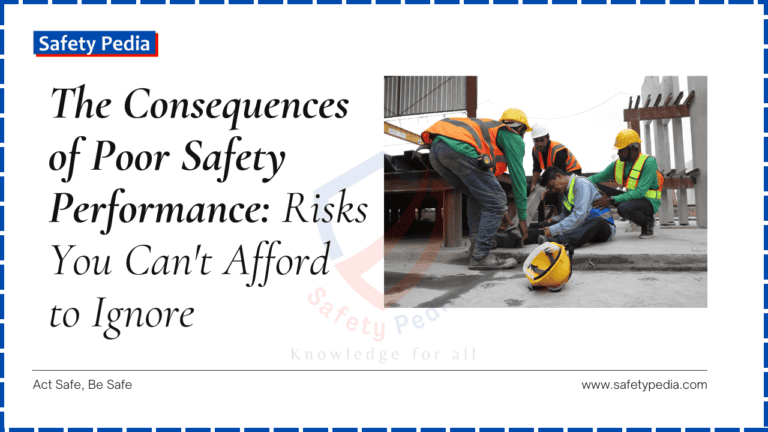
The Consequences of Poor Safety Performance: Risks You Can’t Afford to Ignore
Discover the potential consequences of poor safety performance in the workplace and how they can negatively impact both employees and the company as a whole.
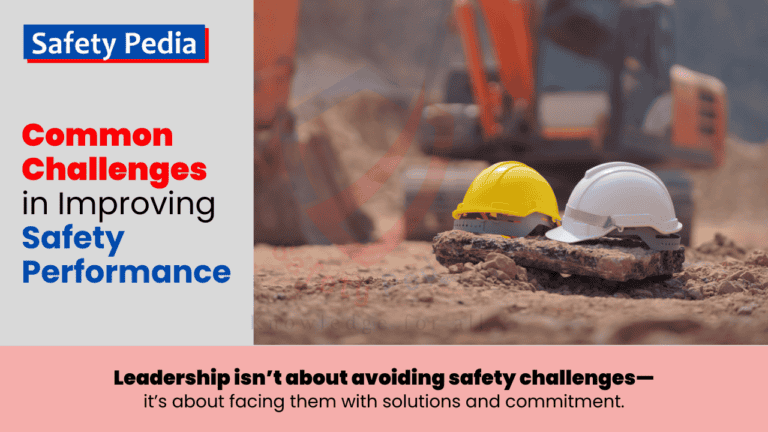
18 Common Challenges in Improving Safety Performance at Work
Discover 18 common challenges in improving safety performance at work. Learn how to overcome these obstacles for a safer workplace.
20 Best Ways to Improve Safety Performance in the Workplace
Discover the 20 best ways to improve safety performance at workplace, including actionable strategies for hazard prevention, employee engagement, safety training, and cultivating a culture of well-being.
Join Our Safety Community!
Stay informed with the latest tips and insights on occupational health, safety, and the environment.

